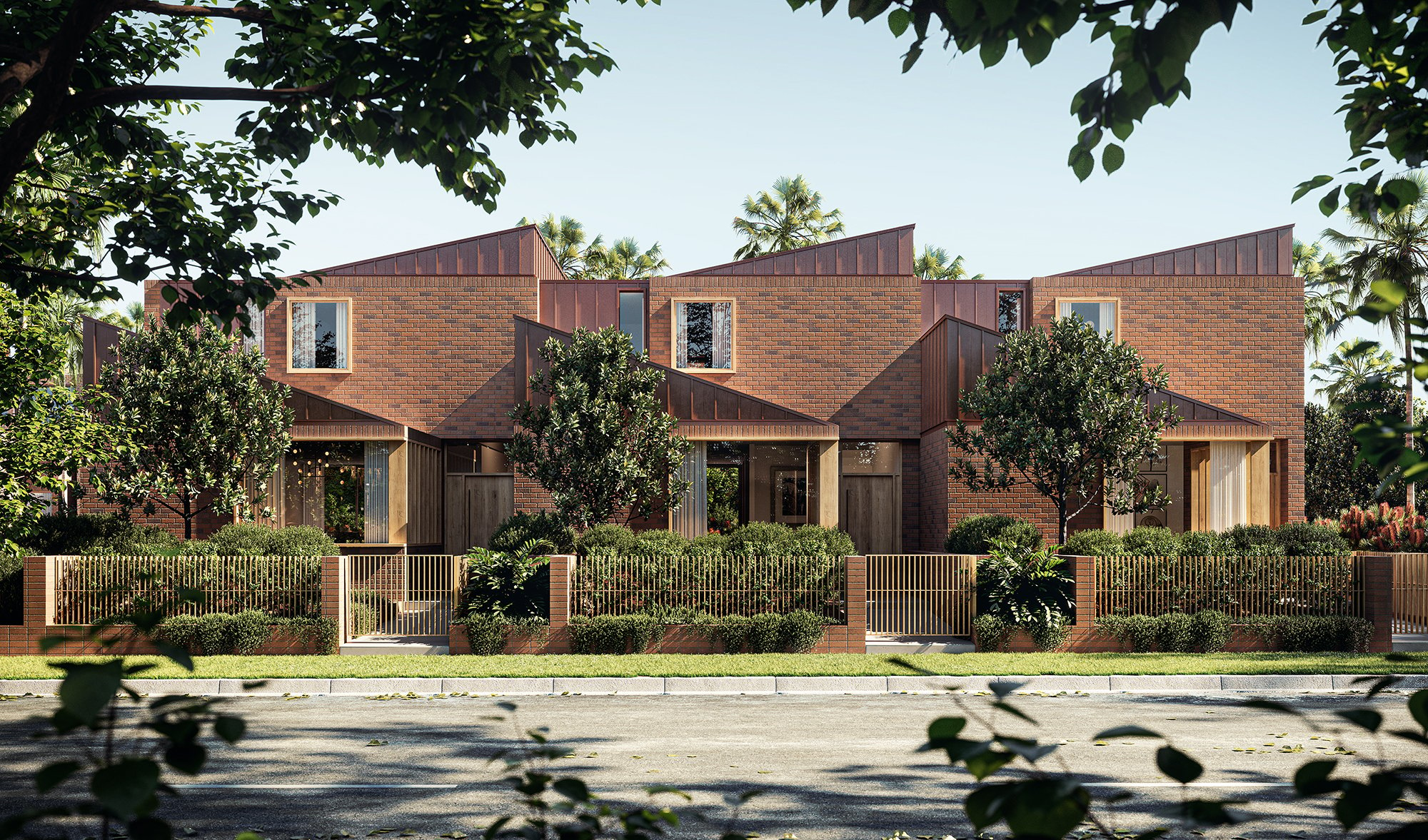Questioning the norm: Ashbury Terraces

Larger than a lightless inner-city unit, smaller than a sprawling detached suburban bungalow; part of the surrounding community fabric, yet a point of difference in relation to the local built environment. Somewhere amidst this thicket of architectural complexity, urban planning bureaucracy and public controversy there might just be a sweet spot hinting at a more desirable and sustainable future in the residential life of a modern city.
Ashbury Terraces, a hybrid project developed by Coronation Property and designed by SJB, is set to bring contemporary terraces and unit blocks to a suburb of almost exclusively detached houses. It hints at a solution, but what then is the problem? Questions of justice relating to housing supply and market inequality, of sustainability implied by the car-centred city, and of desire and aesthetics concerning the deadening suburban sprawl of that city. In short, it is a question of urban futures.
“Ashbury Terraces is about whether you can get some density – some good density, density done well – in a suburb and on a piece of land that was never really designed for anything in particular,” says Adam Haddow, director at SJB.
“I think we’ll solve some of our housing problems by doing projects like this because it’s just not possible that entire suburbs will be rezoned in Australia, so we have to seek out these little ‘lazy’ pieces of land and make them work better for us.”
Supply is of course part of the problem, but the approach to housing must be qualitative as well as quantitative. Simply building more apartment blocks and expanding the suburbs further will not create a more functional or sustainable city.
Residents in low-density, established residential areas have understandable concerns relating to the alien, high-rise blocks being planted with little consideration of surroundings. And a city such as Sydney can rightfully feel anxious about the emergence of ever more monochromatic, homogeneous areas filled with anonymous towers of units.
To conflate poorly designed density with urban density as a whole, however, would be a mistake: “More is not more,” as Haddow succinctly puts it. “The housing supply in the outer suburbs might be the cheapest place for a person to buy, but that doesn’t mean that it’s the cheapest for society.”
The underlying theme tying this philosophy together is diversity, the idea that what makes for a rich and desirable urban fabric is a mixture of uses and typologies. The terrace house, interpreted for the contemporary world, forms one part of this picture – it just so happens to be a rather important part, given the opportunities to design it in ways that mediate the convenience and community of units with the independence of houses.
Haddow refers to Paddington as an example of diversity in the built environment: “The good thing about Paddington is that you see the layers of time – from turn-of-the-century terraces and the manor houses that preceded them to mid-century six-pack apartments and contemporary houses,” says Haddow.
“If you look there or in a place such as Fitzroy in Melbourne, you can see that level of diversity. Contrary to that, we get suburbs that are all the same. If you want to write a beautiful poem, you have to understand language, intonation and so on; a terrace house is just one part of the language of good cities.”
Perhaps one day we will look back on Ashbury, around 10km from the city centre, and read a similarly rich layering of urban history. Ashbury Terraces is a hybrid project combining contemporary terraces with apartments and due for completion at the end of 2024, marks a step in the direction of plotting a missing middle-density solution to the multiple crises of housing in the city.
https://coronation.com.au/media/questioning-the-norm-ashbury-terraces
